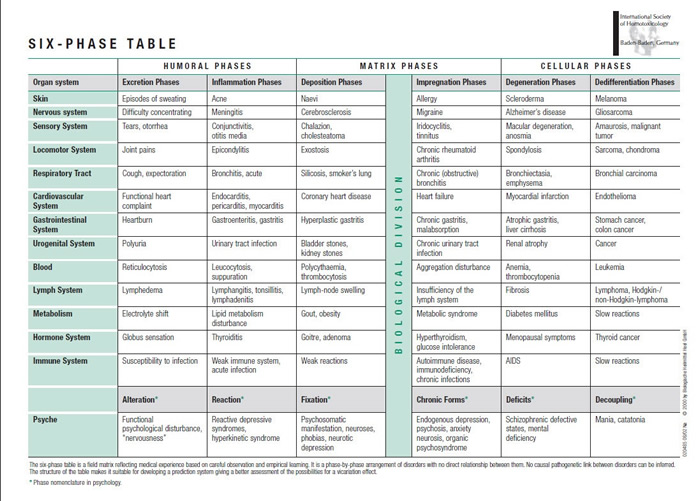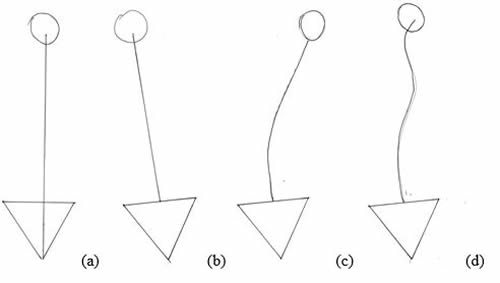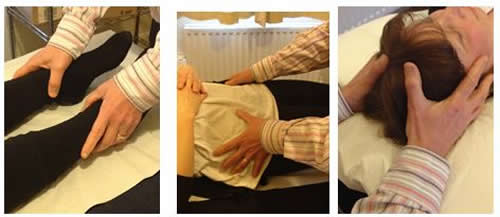Positive Health Online
Your Country

The Challenge of the Chronic Patient
by Jonathan Lawrence(more info)
listed in craniosacral therapy, originally published in issue 241 - October 2017
Yesterday I saw the worst kind of patient, or so the joke goes. A young woman with an acute pain in the neck with associated head pain requiring ibuprofen to function. There were no associated factors. She had locked a facet joint at the C1/C2 articulation on the left side. A simple high velocity low amplitude manipulation solved the problem instantly. As the joke says, I now expect 10 new patients with neck pain anticipating the same miraculous effect this week.
The purpose of this story is to contrast the simple acute patient with the more complex patient with a chronic condition. It is fair to say that the acute patient is simpler to deal with and has the quicker, and as illustrated above more spectacular result. Many practices are built on this and it can extremely rewarding for the practitioner. For example in the early years of my practice I was contacted by someone from the visiting circus, one of the trapeze artists had hurt her back and would be unable to do the evening show. I subsequently saw her and although she didn’t speak a word of English, I managed to mobilize her locked back and she was able to perform that night.
The chronic patient can be much more difficult to treat and treatment may just consist of managing the pain or restriction under certain circumstances but there may also be an opportunity to deal with unresolved mechanical shock or trauma which can also have an impact on the emotional wellbeing of the patient. The basis of success with the chronic patient is the case history and examination. An extensive history with a clear timeline can give clues as to the origin of the problem. From family history to being in the womb, birth, illnesses, accidents, shocks and traumas can all contribute to the present picture.
As an osteopath and craniosacral practitioner one has two sets of tools for the examination; motion testing the mechanics of the body and palpation of the involuntary mechanism.

Fig 1 Six Phase Table of Disease, from Society of Homotoxicology
From the case history it is possible to gauge the chronicity by reference to the six phase table of disease (Fig 1). This concept is a development of Hering’s Law of Cure as taught in classical homeopathy. It graphically illustrates how disease will progress from the acute to the chronic over time. The central line is a notional ‘biological divide’ where the functional disorder progresses to the pathological (left to right). Rightward movement in the table indicates disease progression and leftward movement indicates improvement. Note that the disease process can go from one system to another as illustrated in the homeopathic observation that eczema can progress to asthma. Resolution of asthma conversely can result in the reappearance of eczema and while uncomfortable this is a good sign.
The Six Phase Table, also known as the Disease Evolution Table[1] assists the practitioner in determining the state of chronicity of the presenting case, the degree of pathology, what can be done to assist the alleviation of the presenting problem and an idea of the timeframe required for treatment. This is never an exact process and is dependent on a number of other factors such as the age and vitality of the patient.
The mechanical assessment of the patient can yield more useful information. One of the osteopathic concepts useful in this process is that of the osteopathic lesion. An osteopathic lesion is a structural, functional or energetic issue that degrades the body’s ability to fully function. When assessing the patient the practitioner can pick up areas of dysfunction in bony articulations, soft tissue tone, variations in heat, or rate, amplitude and quality of the involuntary mechanism.
From all this data it is possible to find the Primary Lesion or Lesions. These are the key factors in the pattern of disturbance. These may have initiated the presenting problem or as and adaptive or compensatory mechanism acquired the most importance in maintaining the condition. This is illustrated by a simple example in Fig 2

Fig 2 Evolution of a Simple Compensatory Pattern in Human Mechanics
This diagram demonstrates simply what occurs in one of the most commont presentations to manipulative therapists. The anteriorisation of the sacro-iliac can occur as the result of bending and twisting and lifting.The shift occurs when the joint is over leveraged.
In the diagrams (a) schematically represents a normal configuration of pelvis and spine. Seen posteriorly (b) represents an anterior right S/I joint. The pelvis is effectively tilted up on the right causing the spine to be projecting to the left. This situation is intolerable for the individual and so a compensatory curve occurs intially to the right (c) tilting the trunk the other way and eventually (d) there are sufficient compensations so as to appear relatively normal.
In this way a compensatory pattern emerges that can be stable for a long period of time. Any acute symptoms may be low grade or insigificant in the chronic state. The issue can be reawakened when the system comes under further stress.
In the worst cases there may be a number of primaries with associated compensatory patterns that interefere with each other. The more that there are and the longer that they are present the more instability is created.
Unravelling this can be challenging. This is where the craniosacral therapy assessment can make a major contribution. By going through the ‘listening posts’ and palpating the expression of the involuntary motion (IVM) from the feet to the head it is possible to pinpoint levels and depth of fixations.
By the nature of the rate and amplitude as wella s the qualities expressed by the IVM information can be gleaned as to nature, severity and location and importance of these fixations. A judgement can then be made as to where the primary issue is. A treatment plan is then formulated and subsequently guided by the response of the patient.

Fig 3 Listening Posts Examples.
How do these methods of assessing cases stack up in real life? When treating chronic conditions whether primarily musculoskeletal or those that manifest through multiple systems such as ME the practitioner looks for responses to treatment hopefully positive, but some negative reactions are pointers to a successful way forward. For example the re-emergence of old symptoms, or the manifestation of a temporary acute symptom such as hyperthermia or diarrhoea signs that the body has become reactivated to deal with compensation to infection or toxicity.
Management of these kinds of cases is down to the skill and experience of the practitioner and the understanding of the patient. Patients who have an overt or intuitive understanding of the functioning of their bodies are most cooperative in this process and can understand the changes taking place.
A good example of this is Helen - a patient in her late forties who has been in treatment for over 10 years. In addition to craniosacral therapy she has had homeopathic and acupuncture treatments. She has learned over the years to manage her treatment herself, booking in when she feels the need. A feature of a good therapeutic relationship is when the patient becomes empowered to take more control over the process of healing.
For the last few years her treatment consisted in part of fascial unwinding. This technique is related to classical craniosacral therapy in that it uses positional release. Instead of following the motion of the cerebro-spinal fluid (CSF) to a still point, fascial technique follows the tendency of the fascia that is compensating for mechanical imbalances within the structure to draw to a point of fixation. This point of fixation is invariably due to minor or major trauma experienced historically by the body. The nature of the trauma could be to do with a violent accident such as whiplash, birth, scar tissue, poor posture or even emotional trauma.
Helen progressed from unwinding in neck and head fascia to the thorax and diaphragm. Towards the end of the course of treatment craniosacral technique became the dominant modality to the point now when the system feels balanced. During the course she generally felt very tired after each treatment sometimes experiencing old memories that were likely locked in the tissues as described by John Upledger. He named this phenomenon Somato-Emotional Recall.[2]
On a number of occasions palpatory findings in the IVM included shock, both physical whose manifestation included patterns consistent with the birth process and emotional which obviously related to early abuse. Many of these chronic conditions remain untreated because of lack of awareness on the part of the patient or lack of availability of the right kind of help for patients.
These untreated patterns have a deleterious effect on the body economy and have a knock on to quality of life and may well contribute to chronic and degenerative conditions. Yet the relatively low expense of these therapies compared to the pharmaceutically dominated offerings of the NHS and which in any case are not often curative have a huge amount to offer patients.
If you are a practitioner, reading who works in that wonderful comfort zone of getting the acute patient out of pain first can I say that you do a wonderful job helping humanity. As your skills are honed with experience this I hope you have been encouraged to see the chronic patient more as a challenge than a difficulty.
References
1. http://www.iah-online.com/cms/docs/doc26605.pdf
2. Upledger, Vredevoogd. Craniosacral Therapy. Eastland Press. Seattle. ISBN 0-939616-01-7. 1983.
Comments:
-
No Article Comments available